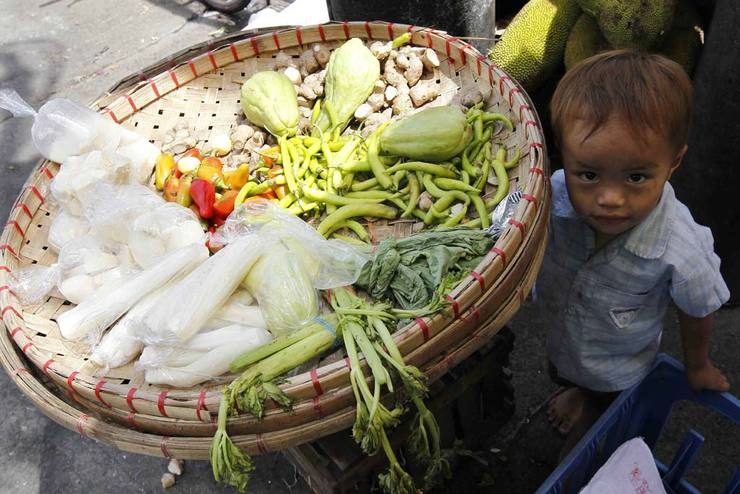SUMMARY
This is AI generated summarization, which may have errors. For context, always refer to the full article.

MANILA, Philippines – The road to a healthy life isn’t just hindered by the problem of malnutrition as there has been an emerging prevalence of obesity, too, among adolescents in recent years.
The World Health Organization (WHO) calls the existence of undernutrition and obesity “double burden malnutrition.” This means that most children’s food intake is either continuously insufficient or in excess of dietary energy requirements.
Double burden malnutrition is often regarded as an intergenerational or life-cycle problem. WHO posits that nowadays, an infant’s inadequate nutritional intake can result in an unhealthy lifestyle in the future.
In the Philippines, the 8th National Nutrition Survey (NNS) conducted by the Food and Nutrition Research Institute (FNRI) found out that prevalence of obesity among children aged 0 to 5 years old is at 5%, while for children aged 6 to 10 years old, it is at 4.9%. Obesity is highest among Filipino youth aged 11 to 19 years old with a prevalence rate of 8.3%. (READ: What is the nutritional status of Filipinos?)
Meanwhile, 3 out of 10 Filipino adults are said to be obese, with 38% of them living in the National Capital Region (NCR).
Product of urbanization?
Based on NNS results throughout the years, NCR has always registered the highest prevalence of obesity among all age group.
This is no surprise as according to a study done by the Food and Agricultural Organization (FAO) on the problem of obesity in developing countries, urbanization might have a role in the abundance of children burdened by obesity.
The study found that the dietary changes in Filipino households was brought about by urbanization. From the 1980’s 37%, urbanized areas grew to 60% in the 2000s.
The change showed a pattern of increasing intake of fats, oils, sugars, syrups, and processed food, while the consumption of fruits and vegetables declined. This, according to FAO, may be linked to “urban diets” or Westernized food habits.
On the other hand, rural dwellers are more likely to not be overweight due to the abundant resources they gather from their own vegetable gardens or small farms. (READ: Family farms crucial in fight to eradicate hunger – UN)
Urbanization unfortunately can be speeded up by the replacement of most agricultural lands with concrete infrastructures. This can result in loss of resources and an increase in prices of these products. (READ: How can government lower food prices in the Philippines?)
Maximizing local crops
With the prevailing problem of obesity, it is inevitable that diet-related diseases become common in the country.
Globally, FAO estimated the cost of all non-communicable diseases such as diabetes and cardiovascular problems – both related to obesity – to have reached $1.4 trillion (P44 trillion)* in 2010. (READ: How being overweight can threaten your health)
To address this problem, the FNRI recently developed 3 food products by utilizing locally-grown crops: monggo frozen yogurt, instant mashed sweet potato premix, and brown rice puto premix.
The crops used to produce them have high dietary fiber and are low in fat. According to studies, diets which include these types of food can decrease the risk of cardiovascular diseases, improve control of diabetes, and reduce body weight.

Making the most out of ingredients abundant in the area is not new to the institute. In 2014, together with the World Food Programme (WFP), they introduced Momsie, which is a supplementary food targeting children suffering from malnutrition.
By using locally-grown ingredients, it does not only lessen the production price – compared to importing it from abroad – but it also makes it more appealing to children. (READ: How local crops can end malnutrition)
The FNRI hopes to disseminate the technology and knowledge process to ensure that all Filipinos suffering from obesity-related diseases can benefit from these 3 products.
Solve extremes
In efforts to attain a healthy Philippines, the prevalence of over-nutrition also needs attention.
WHO suggests that to put an end to double burden malnutrition, prevention is still the best way to go.
This means that an infant should be exclusively breastfed in the first 6 months and undergo continued breastfeeding for at least two years. Complementary feeding, micronutrient supplementation, and fortification of staple food can also help maintain a well-nourished child.
In addition, it is also important to raise awareness among families and empower them – not just the mother – on how to make better choices when it comes to food consumption.
The promotion of sustainable food systems, in addition to a proper diet, will result in a healthier and better Philippines. – Rappler.com
*$1 = P44
Add a comment
How does this make you feel?
There are no comments yet. Add your comment to start the conversation.